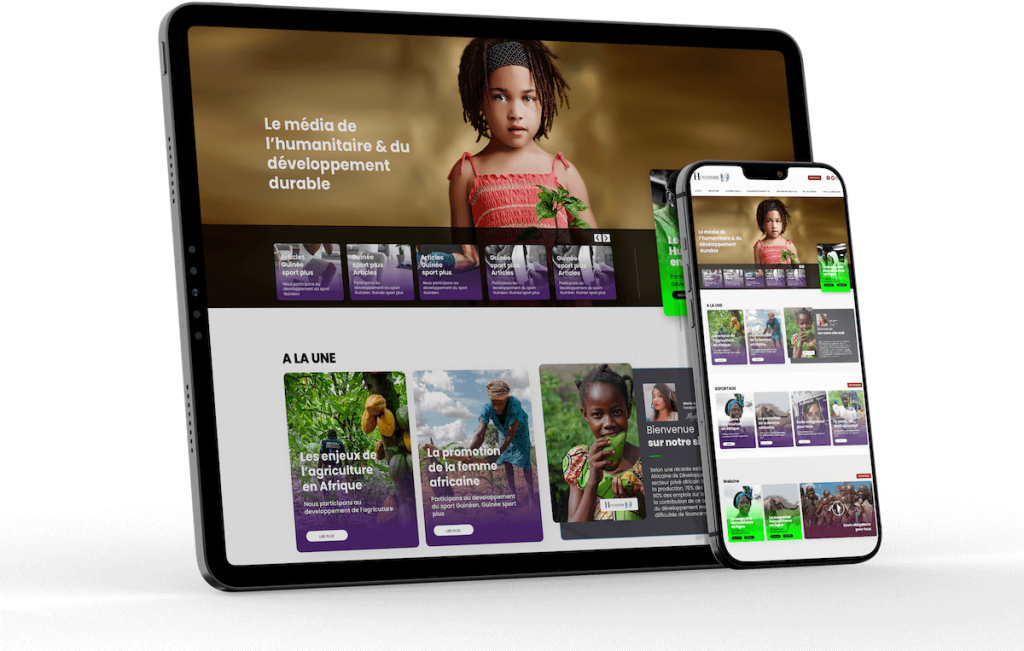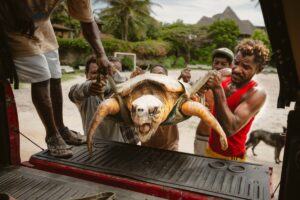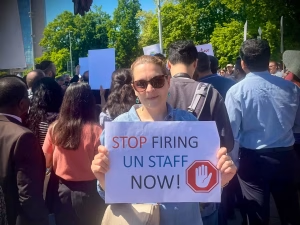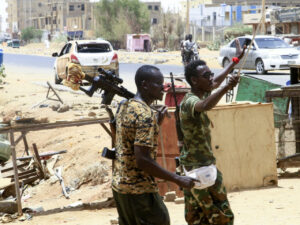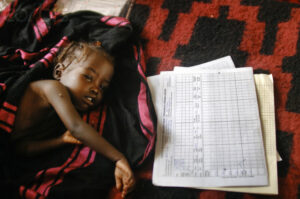Laetitia has had sickle cell disease since birth. A painful genetic disease, but invisible and unknown, which makes it difficult to take her into consideration. Isolation, insults, crying, complicated schooling… The 29 year old woman tells us about the daily life of a sickle cell patient in order to change the way people look at her.
Women’s Diary: You have sickle cell disease, what is it?
Laetitia: It’s a genetic disease that affects the red blood cells. Instead of being round like someone who’s not sick, they’re banana-shaped and rigid. They get stuck in the small vessels and this creates a blockage. This is called a vaso-occlusive crisis and this is what hurts so much. Sickle cell disease is the disease of pain, really. Seizures are like stabbing you endlessly, it can be anywhere in the body where there is a blockage. If the seizure doesn’t pass, you go to the hospital, and you go in front of everyone because you can die. As red blood cells carry oxygen, the body is also poorly oxygenated, and you have organs that fail.
At what age did you first become aware of your illness?
Laetitia: I always knew because my mother always told me. She found out when she was pregnant and was offered an abortion. I didn’t really know what it was, but I knew I had a disease when I was little.
What is the most difficult thing about this disease?
Laetitia: That it’s invisible. It’s hard for people to believe us because you can’t see a crisis. And we don’t always cry like we have since we were little, we have learned to internalise the pain.
“I was neither in the able-bodied nor the disabled group.
How was school with your illness?
Laetitia: I had two periods. I lived in Martinique until I was 12 years old. I was absent all the time but the teachers never asked me why. One day, following a crisis, I started limping and it didn’t go away. I was 11 years old. My mother didn’t understand, she took me to the doctors and they said, “There’s nothing wrong with her. Usually when I had seizures I would go to the hospital or my mum would keep me at home and once the seizure was over everything would go back to normal but not this time. For 6 months I limped. My mum got fed up, she asked me if I was really in pain, I said “yes”. Then one day everything in the house disappeared, there was nothing left. My mother had sold everything to pay for tickets to go to mainland France. My mother is disabled, she has never worked and she brought up my brother, my sister and me alone. When she arrived in France, she made an appointment with a doctor. I will always remember this. He said: “But how do you walk? I was in the last stage of osteonecrosis, there was no bone left in my hip. I was in a wheelchair during my school years, from the age of 12 until 16.
Were you offered other treatment protocols when you arrived in France?
Laetitia: No, but I was lucky because I was able to have an operation. But at school it was always a bit complicated. I was happy because I was in an adapted school, there was a lift to get to the classrooms, lots of people in wheelchairs. I thought “I’m in the group of people in wheelchairs, I’m not alone”. There were adapted trips organised. But on the first trip I was called in and told, “You’re not going. I asked why. I was told: “We can’t take you because we don’t understand your illness. So for four years I never left. I felt really alone. I was neither in the able-bodied nor in the disabled group and that’s when I realised that I had a disease that nobody knew about.
And after secondary school, what did you do? Were you able to go to high school?
Laetitia: After 9th grade, I was able to get out of my wheelchair because of the operations I had and I was able to walk on crutches. I did a normal Seconde, a Première and a Terminale ST2S (Sciences and Technologies of Health and Social). But I was often absent because of the seizures.
My teacher said to me: “You’ll never do anything in your life.
My main teacher didn’t know anything about my illness so I was bullied all the time, he thought I was doing it on purpose, he always said: “You’ll never get your baccalaureate”, “You’ll never do anything with your life” in front of the whole class, I often cried. But I did pass my baccalaureate. I left Orléans to go to Paris. I went to the Henri Mondor hospital and for the first time in my life, at 19, I was treated. I was then able to do what I really wanted to do, I went to nursing school. It worked great at first, but in the third year the osteonecrosis came back, so I could hardly walk again. It was horrible, I was limping so I had marrow transplants. It didn’t work. And then it was a disaster with the nurses I worked with. I had internships where they told me: “Why are you coming?”, “You shouldn’t come if you have this disease”, “Anyway, you sickle cell patients are going to die early”. Then I went to night shift and it got better.
Did you manage to get your nursing degree?
Laetitia: Yes, I did and I worked for a year. After that I couldn’t take it anymore, I stopped. But because I loved health, I did a Master’s degree in Public Health. During the Master’s I had a hip operation and a prosthesis, it was the last resort, there was nothing left to do. That was in 2016. I got my Masters in 2017.
What are you doing today?
Laetitia: During my Master’s degree, I met some friends and we decided to do something for sickle cell disease. We created a mobile application DREPACARE because nobody had ever done it before. At the beginning it was a thesis subject and then we saw the enthusiasm of the doctors we work with and the hospitals. So we decided to continue and we have been doing it for two years.
What is the status of your disease?
Laetitia: I have osteonecrosis in my other hip but it doesn’t hurt. The doctors wait until I can’t walk anymore to operate.
How do you manage the pain?
Laetitia: We are given painkillers at home.
Are you involved in any medical trials to improve the management of sickle cell disease?
Laetitia: I took part in the Patient-Expert training course, so I speak at nursing schools about sickle cell disease and its management. In hospitals, we hold discussion groups with patients and parents. There are trials for treatments, but I am not part of them.
“I would like to see patients loosen their tongues.
What do you say to people with sickle cell disease and their families?
Laetitia: I tell them that the reason why the disease is so unknown is because we don’t talk about it and we have a share of responsibility. I would like patients to speak out. If we want the world to know, if we want treatment to progress, if we want people to take an interest, who better than us to say what we feel, how it hurts and how we live our daily lives? Even the doctors are not aware of what it does to us.
We are told that it doesn’t really hurt as it doesn’t show on our heads.
And for those who don’t know much about the disease?
Laetitia: This disease is an invisible handicap. We would like to pass on a message of tolerance, first of all to health professionals. When we have attacks, we are often called drug addicts, we are told that we are there just for the morphine because we don’t really have pain, as it doesn’t show on our head. But it’s a chronic disease, we’ve been living with it since we were little, we’re not screaming for death, but you have to believe us, it’s an extremely painful disease and when you come to see them it’s because you’re at the extreme. For the general public, it is also a message of tolerance. You have to be tolerant, for example before insulting someone because they are queuing at a priority checkout, they are young and standing up. This happens to me almost every day. Or when I put my disability card on my car and park in a disabled space, I get a murderous look.
Sickle cell patients need to be told: “You are not alone.
Who do you talk to when you have sickle cell disease but are ashamed ?
Laetitia: I started a page on Facebook called “Yes, I have sickle cell disease” and every day someone tells me they are happy I am talking about it and asks if we can talk about it together.
People see that they are not alone. I did the same with my Instagram account “miss.letu” and I get messages all the time to discuss the disease. Sickle cell patients need to be told “You are not alone” and if you feel alone, come and contact me on the networks.
https://sante.journaldesfemmes.fr/maladies/2603181-temoignage-drepanocytose-maladie/
